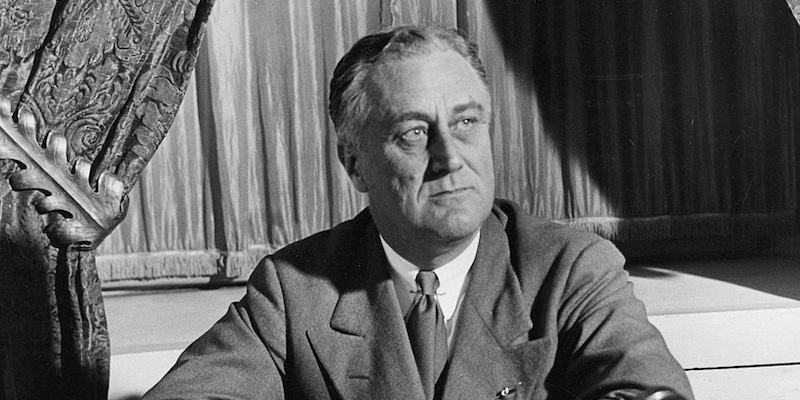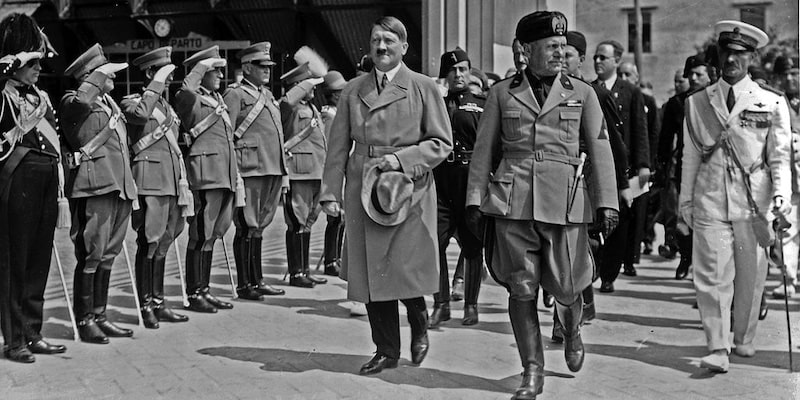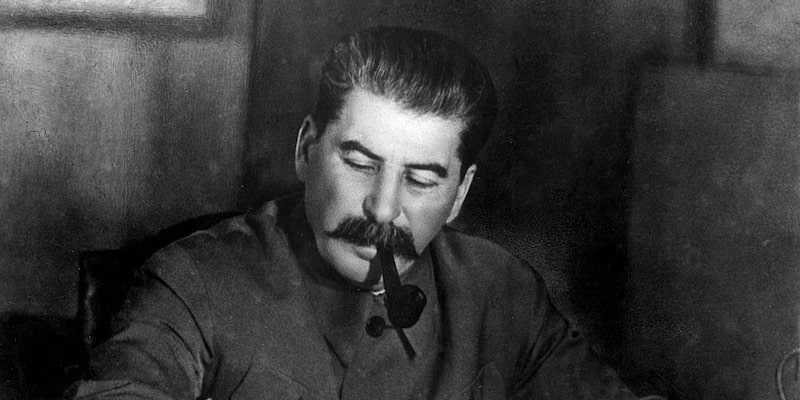We explore the interwar period, and discuss its stages and main events.

What was the interwar period?
The interwar period was the span of time that elapsed between the end of World War I (1914-1918) and the beginning of World War II (1939-1945).
The period was characterized by a disillusionment of most social sectors with the idea of progress promoted by liberalism and parliamentary institutions, especially in Europe, following the horrors of World War I.
Against this backdrop, adherence to communism, which had triumphed in Russia in 1917, grew, as did support for nationalist movements, which fed on resentment for the humiliation experienced by certain countries after World War I (as was the case of Italian fascism, which came to power in 1922 and inspired German Nazism).
A manifestation of the political and ideological conflict of the period was the Spanish Civil War (1936-1939), which pitted republican, socialist, communist, and anarchist factions against the insurgent or "nationalist" side, which had the backing of fascism and Nazism. This conflict ended a few months before the outbreak of World War II.
The twenty-year interwar period was marked by a series of stages:
- The first stage was characterized by problems that resulted from the human and material losses of the war (particularly in Europe). It encompassed reconstruction efforts, the negotiation of war reparations imposed on the defeated countries, and the signing of treaties (like the Treaty of Versailles).
- The second stage was a period of economic recovery and political détente that boosted both consumption and entertainment (the "Roaring Twenties"), especially in big cities. This period ended with the Stock Market Crash of 1929 and the world crisis that ensued, which reached into the late 1930s.
- The third stage was heavily marked by the economic crisis. It witnessed the adoption of protectionist measures and state intervention in the economies of certain countries (such as the New Deal in the United States). It also saw the rise of Nazism in Germany, and the expansion of the Third Reich, which ultimately led to the outbreak of World War II.
Frequently asked questions
What was the interwar period?
The interwar period was the span of nearly twenty-one years between the end of World War I on November 11, 1918, and the beginning of World War II on September 1, 1939.
What characterized the interwar period?
- Dissatisfaction with European liberal democracies following the horrors of World War I.
- The growth of socialism and communism after the Bolshevik victory in Russia and the consolidation of the Stalinist regime in the Soviet Union.
- The rise of extreme right-wing nationalist movements, such as Fascism (which came to power in Italy in 1922) and Nazism (which came to power in Germany with the rise of Adolf Hitler in 1933).
- The "Roaring Twenties" witnessed economic stability, but following the stock market crash of 1929, the Great Depression set in.
How did the interwar period end?
The interwar period ended when German expansionism, which after annexing Austria in 1938 and occupying Czechoslovakia in 1939, went on to invade Poland on September 1, 1939. The United Kingdom and France, which had pledged to support Poland in the event of a German attack, declared war on the Third Reich, and thus began World War II.
- See also: Cold War
Treaty of Versailles
Following the armistice signed between Germany and the Allies on November 11, 1918, ending World War I (then called the "Great War"), a peace conference was convened in Paris in early 1919.
There the victors, especially British Prime Minister David Lloyd George, French Prime Minister Georges Clemenceau, and US President Woodrow Wilson, decided on the peace terms to be imposed on the defeated nations.
This resulted in the signing of a series of treaties, between 1919 and 1923, with Germany (Treaty of Versailles), Austria (Treaty of Saint Germain), Hungary (Treaty of Trianon), Bulgaria (Treaty of Neuilly), and Turkey (Treaties of Sèvres and Lausanne).
These treaties were characterized by the harshness towards the defeated countries, in particular Germany. The latter was held responsible for the war and was imposed restrictions on rearmament, as well as financial reparations demanded by the governments of France and the United Kingdom, which the German state had serious difficulties in meeting.
Moreover, with the dissolution of the Austro-Hungarian, German, Ottoman, and Russian empires, the treaties involved a reordering of the map of Europe and a redistribution of the control over territories in the Middle East and former German colonies in Africa.
A further outcome of the treaties was the creation of the League of Nations, aimed at safeguarding peace among its member nations, under the principle of "collective security".
Although it was created at the behest of US President Woodrow Wilson, who included it in his Fourteen Points for World Peace in 1918, the United States refused to join following the Senate's refusal to ratify the Treaty of Versailles, and was ineffective throughout most of its existence.
The Roaring Twenties
The early post-war years in Europe were marked by the signing of treaties, war memorials, and costly reconstruction plans.
Inflation and unemployment ravaged Europe and fueled social unrest, with uprisings like the one spurred by the Spartacist League in Germany, inspired by the Russian Revolution and suppressed by the government of the Weimar Republic. This climate favored the rise of nationalist movements.
In turn, the US government and economy emerged strengthened from World War I. The war had not reached its territory, and the US industrial and financial capacity turned it into a creditor to countries such as France and the United Kingdom.
Meanwhile, from 1925 onward, Europe experienced a phase of monetary stability and economic recovery, which coincided with the reconstruction of trade networks and an industrial boom both in Europe and the United States.
This era is known as the "Roaring Twenties'', "Happy Twenties'', "Golden Twenties" or "Jazz Age", especially in the United States but also in leading cities in Europe and other parts of the world. During these years, the pessimism of the immediate post-war period was left behind, and consumption, entertainment, and well-being spread.
Mass consumption" encompassed consumer goods as well as entertainment (such as movies), sports and other forms of leisure. The popularity of dances like the Charleston, jazz and tango went hand in hand with changes in fashion.
Politically, reforms were introduced, such as "universal suffrage" in the United Kingdom (1918), which in truth granted voting rights to all adult males and women over 30 years of age. In the United States, the 19th amendment to the Constitution was ratified in 1920, giving women the right to vote.
The Great Depression

The prosperity of the 1920s drastically came to an end in the final year of the decade. The Wall Street Crash of 1929 marked the onset of what came to be known as the Great Depression.
The underlying causes have been a subject of debate among historians and economists. After years of financial speculation, the stock market collapse on the infamous "Black Thursday" led to a deep recession in the United States.
This recession spread to most of the world and reached into the 1930s. Trade, production, and the financial sector plunged into an international crisis, leading to unemployment and widespread poverty.
In the United States, President Franklin D. Roosevelt rolled out an economic recovery plan known as the New Deal, which consisted of a public works program, consumption stimulus, aid to agricultural sectors, labor rights, and a financial system reform.
In Latin America, export barriers imposed because of the crisis led to the implementation of import substitution policies, often in the context of political changes such as the military coups d'état of 1930 in Argentina and Brazil.
In Europe, protectionist measures were adopted, and the gold standard was abandoned. In the mid-1930s, both Europe and the United States initiated an arms race that contributed to an economic recovery just before the outbreak of World War II.
Italian fascism
A distinctive phenomenon of the interwar period was the rise of fascism in Italy, Nazism in Germany, and similar movements in other parts of Europe.
Despite being on the winning side in World War I, Italy’s territorial claims were not fully met at the Paris peace conference.
This, alongside other factors, paved the way for the rapid ascent of a far-right nationalist movement led by Benito Mussolini. Among the factors that contributed to Mussolini’s rise were:
- the remembrance of war casualties
- the advance of socialism and communism (perceived by some sectors as a threat)
- the economic crisis of the early twenties
- a growing feeling of the inability of liberalism and parliamentary governments to address pressing issues.
Mussolini founded the National Fascist Party in 1921. In October 1922, his "Blackshirts" (war veterans, unemployed, and other sympathizers organized as a paramilitary force) staged the March on Rome, during which King Victor Emmanuel III was forced to appoint Mussolini as prime minister.
Shortly after, a dictatorship was established with Mussolini as "il Duce" (the leader), who structured a corporate state based on the persecution of opposition, the use of violence, censorship, and a propaganda apparatus centered around the cult of the leader.
German Nazism

In the early 1920s, Germany saw a series of coup attempts by extreme right-wing paramilitary groups directed against the institutions of the Weimar Republic.
One such attempt was staged in Munich in 1923 by Adolf Hitler, an army corporal who had served in World War I, and in 1920 had formed the National Socialist German Workers' Party, known as the Nazi Party. Though the coup attempt failed, Hitler, while in prison, penned the book Mein Kampf (My Struggle), in which he expressed his expansionist and racist ideas.
Economic hardship and unemployment brought about by the onset of the Great Depression exacerbated discontent with the Weimar Republic. The Nazi Party, blaming the government for the dire situation and accusing traditional politicians of betraying the German army by signing the Treaty of Versailles in 1919, gained popularity and seats in the Reichstag (German parliament).
President Paul von Hindenburg appointed Hitler Chancellor in 1933. Following the Reichstag fire, attributed to a Communist militant, Hitler was granted full powers. With Hindenburg's death in 1934, Hitler became the state leader (Führer), marking the beginning of the Nazi dictatorship or Third Reich and leaving the door open for German rearmament and expansionism.
In 1936, Hitler and Mussolini formed the Rome-Berlin Axis, and Germany signed the Anti-Comintern Pact with the Empire of Japan. The latter also saw the rise of nationalist political and military leaders, embarking on territorial expansion in Asia with the annexation of Manchuria (1931) and the invasion of significant parts of China (1937).
The military alliance between these three states, which made up the Axis during World War II, was formalized with the Pact of Steel (1939) and the Tripartite Pact (1940).
The Soviet Union (USSR)

In Russia, following the October Revolution (1917), which brought the Bolshevik party led by Lenin to power and resulted in the signing of a peace treaty with Germany, the implementation of communism underwent different stages.
During the Civil War period (1918-1921) against factions opposed to the new regime (supported by foreign armies), "war communism" was implemented, that is, the nationalization of agricultural resources through forced grain requisitioning. In addition, territories that had formerly belonged to the tsarist Empire were reconquered, forming what later came to be known as the Union of Soviet Socialist Republics (USSR).
After quelling revolts such as the Kronstadt sailors' rebellion (1921), and consolidating measures of repression through bodies such as the Cheka, a New Economic Policy (NEP) was introduced, which sought to address production issues through a mixed state-private economy.
Following Lenin's death (1924), Joseph Stalin became head of the Soviet party and government. In 1928, Stalin initiated a program of intensive industrialization and forced collectivization of agriculture. The aim was to construct "socialism in one country", in opposition to Leon Trotsky's ideas of spreading communism to all of Europe through "permanent revolution".
This program drove a profound economic transformation at the cost of millions of deportations and executions.
Though in theory opposing political and economic models, Hitler's Germany and Stalin's Soviet Union signed a non-aggression pact in 1939 prior to the outbreak of World War II, by which they agreed to partition Poland. However, in 1941, Germany invaded Russia, leading the latter to join the Allied side for the rest of the war.
Spanish Civil War
The advance of fascisms in Europe triggered a series of anti-fascist alliances that found political expression in the so-called "popular fronts".
In France, a Popular Front was formed, which won the general elections of May 1936 and formed a government headed by socialist Léon Blum. In Spain, the Popular Front triumphed in the February 1936 elections, making Manuel Azaña president of the Second Republic.
Following the victory of the Popular Front, the conflict between Spanish right and left wings intensified. A faction of the army led a coup d'état that started as an uprising in Melilla (in North Africa) on July 17, 1936, under General Francisco Franco.
The uprising extended to the peninsula the following day, encountering success in some regions while failing in others (like in Madrid and Barcelona). Thus began a civil war between "republicans" and "nationalists" that ended three years later, on April 1, 1939, with the victory of the nationalists and the establishment of a dictatorship under Franco.
Though the Western powers agreed not to intervene in the Spanish conflict, thousands of volunteers joined the International Brigades that fought alongside the Republicans. The Soviet Union, in turn, contributed war material to the Republican government.
Germany and Italy collaborated with the Nationalists (notably through the use of the German Condor Legion and the Italian Legionary Aviation in events such as the infamous bombing of Guernica in 1937). It has been pointed out that Spain, through this kind of intervention, would have served as testing ground for weapons and tactics later used in World War II.
Explore next:
- Spanish democracy
- Athenian democracy
- History of the European Union
- Treaty of Versailles (World War I reparations)
References
- Aldcroft, D. H. (2003). Historia de la economía europea 1914-2000. Crítica.
- Britannica, Encyclopaedia (2023). Spanish Civil War. Encyclopedia Britannica. https://www.britannica.com/
- Cabrera, M., Juliá, S. & Martín Aceña, P. (comps.) (1991). Europa en crisis. 1919-1939. Editorial Pablo Iglesias.
- Romer, C. D. & Pells, R. H. (2023). Great Depression. Encyclopedia Britannica. https://www.britannica.com/
- Sevillano Calero, F. (2020). La Europa de entreguerras. El orden trastocado. Síntesis.
Was this information useful to you?
Yes NoThank you for visiting us :)